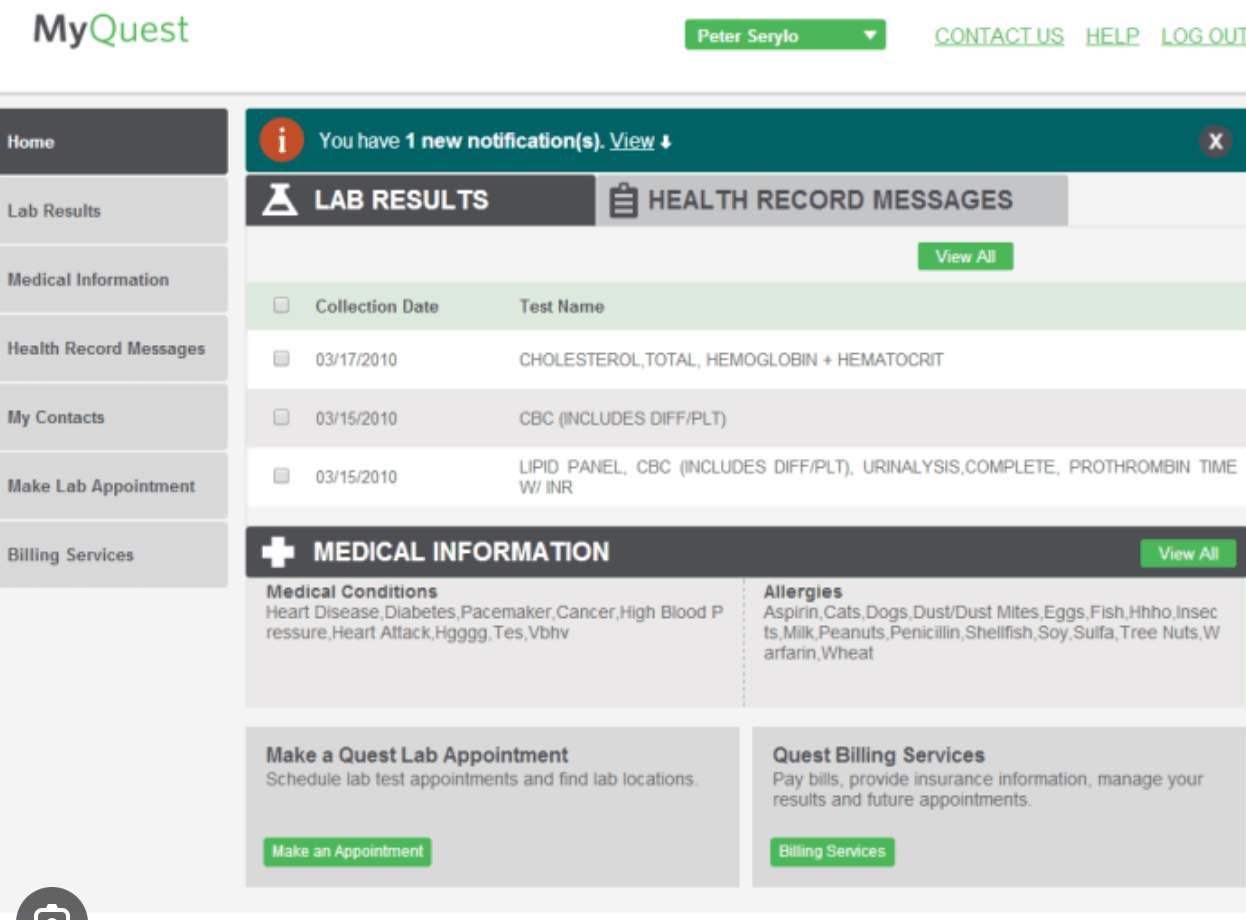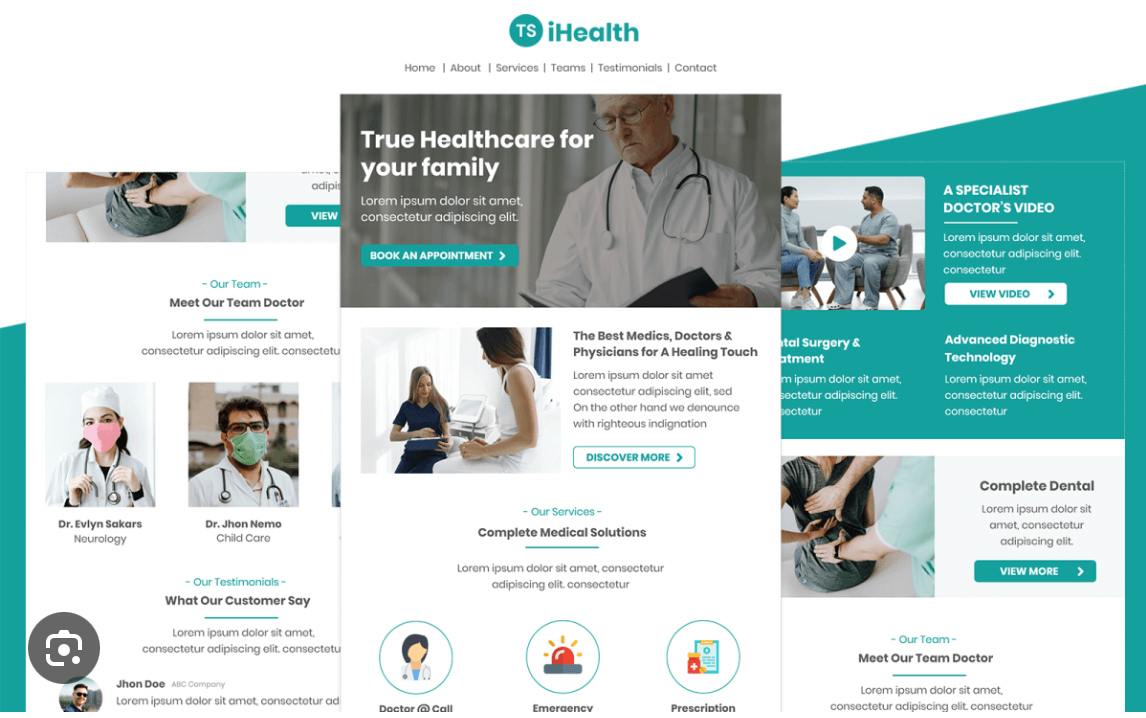As a practice manager, you have a lot on your plate already. You’re juggling budgets, billing, staffing, and scheduling. You oversee patient engagement and satisfaction, too.
Adding medical practice marketing to your to-do list might feel overwhelming.
But the good news is that it doesn’t have to be.
Medical practice marketing comes down to a few targeted strategies you can implement right away.
This post will cover the basics of healthcare marketing, including how it differs from other marketing types. It will break down the online and offline strategies you need for your practice, as well as some additional tips for success.
Let’s dive in.
What Is Medical Practice Marketing?
Effective marketing is a mix of strategies for attracting the right patients and engaging them throughout the continuum of care. Ultimately, it helps your medical practice stand out from the rest.
Medical practice marketing is essential for several reasons, including the following:
- Improving patient engagement, leading to greater satisfaction in patient care
- More referrals and retention of new patients
- Streamlining and optimizing processes to lift your bottom line
Effective marketing includes a mix of online, print, and in-person strategies. Plan on a long-term, multi-pronged approach for maximum results.
And don’t underestimate the importance of word of mouth. Get the marketing message out there, but continue offering high-quality care and encouraging patients to spread the word.
Since medical practice marketing includes many components, be sure to ask for help if you need it. Reach out to colleagues, other professionals, and expert online resources for support.
How Is Healthcare Marketing Different from Other Marketing Types?
Healthcare marketing stands out from other types of marketing in that you, as the practice manager, are not merely selling a product. You are also considering your patients’ healthcare journeys.

A key component of your medical practice is establishing trust between your staff and your patients. About 70% of patients report feeling trust in their doctors, and 79% report trust in nurses.
Your first impressions matter. Patients who feel their doctor is interested in them as a person, knowledgeable about their medical issues, and responsive to their needs are more likely to return.
Ensure your marketing strategies emphasize your practice by including the following.
- Identification of staff. Who works in the office? What are their respective backgrounds? What do they specialize in?
- Identification of patient group. Who does your practice serve?
- A clear list of offerings. What services does your practice provide?
- Differences and distinctions. What sets your medical practice apart? Why should patients come to you instead of others?
Effective marketing showcases what your practice offers, why you should be the first consideration for patient care, and why your patients want to stay with you long-term.
Now you know what medical marketing is and how it’s different from other marketing forms. Let’s now look at the two types of medical marketing you should implement: online and offline.
Online Marketing Strategies
Online or digital marketing refers to any type of marketing done over the internet. It includes everything from content marketing to digital ads. But when developing your medical practice’s online presence, you’ll want to start with three core components of digital marketing: establishing a website, engaging in social media, and running an email campaign.

Website
As patients increasingly head online to search for providers, you want to ensure your website clearly and easily provides them with the necessary information.
Responsive and mobile-friendly
A responsive website adapts easily to any device.

The web pages automatically adjust their formatting depending on whether the user accesses the site through a computer, tablet, or mobile phone.
Almost 57% of web traffic occurs through mobile phones, so you don’t want to ignore this step.
Look at websites you’ve admired or use frequently. Odds are they are seamless to navigate, whether you’re tapping away at a laptop or scrolling on your phone.
Well-designed
A second consideration for your website is its design.
Your site should be ADA-compliant to accommodate those with vision impairments or other disabilities.
Your website should speak directly to your brand as a medical practice. Think of the colors, fonts, photographs, and other features you want to use to establish your marketing message.
Searchers should be able to navigate your site in a few clicks. Often, those who have to sift through multiple pages to find information give up and start to look elsewhere.

Your site should include the following features, at least to start:
- Homepage. This is the first page searchers see when they select your website — providing them with a first impression of your practice. So think carefully about how you want your homepage to appear to current and prospective patients.
Your practice’s name should be featured prominently in clear, easy-to-read text. Include a menu with direct links so searchers find information quickly.
- Contact page. Patients should be able to access contact information within one click as soon as they’re ready to reach out. Your contact page lists the specific contact information for patient questions, scheduling, and billing. Include phone numbers and emails for each contact.
Additionally, list your address and directions to your building, along with a map. Add a link to Google Maps for patients to plan their route.
- “About Me” page. Your “About Me” page should start with your mission statement.

Tell patients precisely what your practice is all about through your ideas, expectations, values, and plans for quality patient care.
List and group practice members, such as “specialists” and “front office staff,” for easy reference.
For each member, include a photograph and a short bio with backgrounds, licenses, certificates, professional associations, and specialties. Include some personal information, such as hobbies and areas of interest, to allow for additional connections between patients and staff members.
Don’t be afraid to showcase your personality here. Searchers who feel connected to your practice are more likely to reach out or return.
- Patient portal. Invest in a portal so they can participate in video conferencing, ask questions, voice their concerns, pay their bills, and access their electronic health records (EHRs) online.

Patients also enjoy the ease of a portal to schedule, reschedule, verify, or cancel appointments.
Furthermore, patients often look for telehealth options through patient portals. Offering this option can lead to customer loyalty—94% of patients who have previously accessed a telehealth appointment plan to book more in the future.
Streamline your system by looking into telemedicine software that includes video appointments, scheduling, records management, and billing all in one place.
- Patient testimonials and reviews. Provide an option for patients to email staff with their thoughts or add a form to your website.
You can read through and curate the reviews you want to display. Positive reviews should be featured on your landing page or dedicated testimonials page.
- Link to dedicated review sites, such as Healthgrades or RateMDs, so that potential patients can read about other patient experiences.
- Blog. A blog is an informal means to provide helpful information your patients seek.

Customize the content for your patient population. Use your blog as an opportunity to address frequent concerns, answer common questions, or introduce new technologies or services.
If writing article posts isn’t in your wheelhouse, hire a professional to help you.
SEO best practices
Search engine optimization (SEO) is how a website or blog is optimized for Google and other search engines. It involves building your site around and including content relevant to what your patient population is looking for.
When you optimize, you increase the chances of your site ranking on Google, showing up in search results, and leading patients directly to you.
When people head online, they start their search by typing in a few key phrases or questions.
Brainstorm what your patients might be searching for, such as the types of services they might need, their possible questions or concerns, symptoms, or treatment options.
You can start by inserting those key phrases into your website and customized content. If you want to go even deeper, check out one of the free keyword research tools available online.
Investing in SEO pays off, as direct search, organic search, and social media drive about 54% of site visits.
You can also claim local listings in Google or invest in a paid search campaign to drive more traffic your way.
Once you have a handle on your website, it’s time to consider social media.
Social Media
Including social media in your marketing efforts is another opportunity for your practice to connect with patients online.

Social media continues to gain new users, with a 3% increase in 2023 over 2022. The average user spends about two-and-a-half hours daily on their preferred sites, giving your practice an excellent opportunity for additional exposure.
So where do you start?
Narrow down your platform
You have multiple platforms to choose from, including the following:
- YouTube
- Snapchat
- TikTok
Facebook currently has the most users, with YouTube and WhatsApp second and third, respectively.

YouTube and TikTok are great options to seriously consider since about 73% of people prefer watching short videos to taking in information through reading or listening.
Pick one or two platforms to begin with. They don’t have to be ones you necessarily use personally, but they do need to be ones you are interested in learning more about and can commit to using professionally.
Also, consider your audience. What social media platforms are they using? Facebook and YouTube are good options for a general audience. If your practice targets millennials, you might also want to use Instagram.
Be present
Why should you focus on only one or two to start?
You need to be consistent and plan to post on a regular basis. Pick a day and time to release new content, and stick to it. You can use social media automation tools to schedule your posts ahead of time.
Over time, patients may come to expect your posts. Followers might stop checking if you take a posting break. If your posts are too sporadic, your content might get lost in the shuffle, depending on the platform.
Patients who regularly engage with social media will be more likely to comment, ask questions, or raise concerns. Ensure you monitor your site and consistently respond to patients’ posts to keep them engaged.
Offer quality
Quality takes time.
Your posts don’t need to be lengthy, though. You can plan several posts around a common theme or address a series of questions over time.
Develop your content, whether that’s in the form of photos, videos, or infographics, and customize it to your patient population by answering common questions, describing certain outcomes, or addressing specific needs.
Of those who take the time to shoot and post videos, 92% report a positive return on their investment.
Once you have your platforms and start to develop content, here’s additional good news: you can drive even more traffic to your website.
Link to your website
The content you post on social media not only offers you the chance to further engage with your patients, but it can send them directly to your website.
Here’s a real-world example:
1. On Sunday: Post a blog on your website describing the aftercare steps required following a surgical procedure.
2. On Tuesday: Post an infographic summarizing the same aftercare steps on Instagram or Pinterest.
List your practice name on the infographic, and include a direct link to the website.
3. On Thursday: Post a short video to YouTube of a provider reviewing the steps needed for aftercare.
At the end of the video, list the name of your medical practice, your contact information, and links to the website for follow-up.
Patients consume social media in different ways. Those who aren’t interested in reading a blog post may spend a few minutes watching a short video instead. Either way, your patients can find and receive the quality information you provide.
Maintain consistency through the content you create in each post. Ensure the brand your practice has developed is recognizable, too.
Once you’ve established your website and social media plans, you’ll be ready to add an email campaign to the mix.
Email Marketing
Email marketing is a must. As 90% of people use email regularly, this is one marketing channel you don’t want to overlook.
While “campaign” might sound daunting, it doesn’t have to be. Think of it as another chance to continue engaging with your patients online.
Plan to continue your brand and messaging through your emails so that every contact is consistent.
General patient info
One way to start connecting with your patients through email is with a newsletter.

You can find free medical newsletter templates online. Choose your favorite, then commit to a regular schedule for release — similar to your blog and social media campaigns.
Newsletters don’t typically occur with the same frequency, so think monthly or quarterly rollouts.
Some possible topics to cover in your medical practice’s newsletter include the following:
- General introduction. In your first newsletter, share the basics. Include your mission statement, the types of care the clinic provides, the clinic’s location, and a list of your staff members.
- Office updates. These could include changes to office hours or upcoming holiday closures. You could also mention new equipment, the expansion of your office space, or any new services.
- Staff updates. Introduce new doctors, nurses, technicians, and clerical members to the practice.
- Staff features. Give patients a chance to learn more about your staff, with a different member featured in-depth each time.
- Interviews with related professionals. Connect with colleagues who may provide support services for your patients and illustrate how they can help.
- Event information. Tell patients about upcoming screenings, open houses, or community events they might be interested in.
- Teasers for your blog or social media platforms. Give patients a sample of what they might expect from your blog or social media platforms, then list the specific site and handles for them to access and follow.
- Helpful care tips. You're the expert in your field. So, provide your patients with helpful tips on staying healthy. This type of useful content can establish more trust in your practice and keep existing patients engaged.
Personalized patient info
Use your email marketing to send scheduling and appointment reminders.
Emails are also an easy way to celebrate patient birthdays, medical anniversaries, and other important milestones.
Use the power of your website, social media, and email to market your practice, and watch your patient engagement soar.
Offline Marketing Strategies
While online marketing techniques are highly effective, other opportunities exist to support and grow your practice, too.

Exceptional Patient Experience
One of the best strategies for marketing your medical practice is to take advantage of what you already do: provide your patients with excellent, high-quality care.
Provide the highest possible quality of care
Patients associate excellent care with trust in their providers.
Those who trust their provider believe the latter understands their conditions, illnesses, and concerns. They believe their provider knows what’s necessary to successfully treat or manage their condition. Patients with a high degree of trust are more likely to stay with their provider for the long term.
Ensure each patient’s experience starts positively from the moment they enter your office.
Staff should greet patients by name and take extra time to listen to their needs upon their arrival. Nurses and technicians should strive for connection by introducing themselves to the patient as they transition to an examination or treatment room.
Patients who are happy with their care are more likely to spread the word to their social groups. They might tell their family, friends, colleagues, or even strangers about the quality of the care they receive.
This leads to greater patient retention and higher new-patient referrals.
Provide direct opportunities for your patients to give feedback. Send links to online surveys or distribute printed copies for patients to take home. Leave comment cards in the waiting area for patients to leave anonymous praise and concerns. Encourage patients to share feedback through review sites like RateMDs.
You can ask caregivers and family members close to the patient to share their opinions, too.
Give your patients the best possible care, and they will be inclined to spread the word.
Add other benefits
Boost the patient experience outside of scheduled office visits.
Offer a referral program with gift cards for each new patient someone brings through your doors.
Provide plenty of print information in the office, too. Think of your population and the resources, materials, or references they would find beneficial.
Provide an opt-in program for patients to receive print information (or your newsletter) through direct mail if they prefer. Make sure your print materials are suited for readers with low vision or other disabilities.
You’re providing the best quality of care to your patients. Now you’re ready to tell everyone about it.
Promotional Opportunities
There are a variety of ways you can promote your medical practice to the community. Here are just a few:
In-office opportunities
Start by offering promotions within the office. Host an open house for new and current patients to introduce your staff members, describe your specialties, and review questions and concerns.
Provide takeaways at the front desk as patients sign out. Emblazon pens or stress balls with your logo and contact information for patients to reference.
Put together care packages for new patients. Include your practice information and some goodies they can take home.
Remember that established patients enjoy little treats, too. Dental practices often provide toothpaste, toothbrushes, and floss. Podiatrists could hand out soft socks or unscented creams to soothe aching feet. Pediatricians might provide bubbles or novelty sunglasses little ones would love.
Out-of-office examples
Determine how your practice could become involved in the community. Work with your local Chamber of Commerce to decide where you can best promote your practice.
Are there annual or semi-annual events, such as health or county fairs, where you could sponsor a booth?
Could you partner with a local school district to speak at assemblies or provide health screenings?
If you’re passionate about sports, your medical practice could sponsor a youth soccer, softball, or baseball team.
Work with other professionals in your field. Who could you partner with to provide services or promote referrals?
Another form of promotion goes back to your online presence. Consider what sites might link to yours, such as review sites, industry sites, local community organizations, or partners. If other authoritative websites provide links to yours, you will develop increased Google authority over time. This will help your site rank higher in search results and start driving even more traffic your way.
Now that you have the strategies you need, read on for some tips to make your medical marketing even more successful.
Tips for Success
As you get started with your medical practice marketing, follow these suggestions to obtain the best possible results:
Make It Professional
You run a professional medical practice and want that to be evident in your marketing plans.
Hire a professional photographer to take high-quality photographs of your office staff, clinic areas, and specialty equipment. Use the pictures throughout your website and print materials so patients can visualize your practice before they even set foot in it.
Consider a video tour or 3D photography to create a positive first impression for online searchers. Why not give them a tour of your office and what they can expect?
Your practice’s contact information should be clear and easy to read. Whether they look online, at a print mailer, or on the side of a pen, patients should be able to easily find the name, phone number, and email for your practice.
Define Ownership of Marketing Activities
Consistency is critical to your marketing efforts.

You don’t have to do everything yourself. Delegate tasks and responsibilities to personnel in the office. Outline the roles, obligations, and deadlines for each strategy you employ. For instance:
- Community outreach efforts, including communication with new and current patients and other clinics, could be managed by one staff member.
- Social media management, including developing and sending newsletters and monitoring the practice’s Instagram feed to respond to comments and questions, could be managed by another individual.
- You can also consider outsourcing. Hire professionals to create your website and help you develop your brand.
- Email campaigns, including scheduling and automation, can be managed through services such as Mailchimp.
Think about your strengths and those of your team members. Who demonstrates a particular skill or aptitude? Assign your marketing roles accordingly, including where and when you might need to outsource your efforts.
Analyze Your Results
Use those patient surveys and feedback forms to help inform your practice and provide a high-quality patient experience.
Ask patients and caregivers directly for their thoughts, opinions, and concerns. Follow up by phone call or email. Encourage patients to communicate through the portal and let you know how their experience was.
Use Google Analytics to track your website’s effectiveness.

Find out how many people are visiting and for how long they browse your site. Adjust your SEO strategy if needed to obtain better results.
Use the information you gather to guide, inform, and revise your marketing efforts.
Marketing your practice isn’t a one-and-done operation. Continue to analyze and refine your strategy over time, and watch your practice thrive.
Start Your Medical Practice Marketing Efforts Today
Now you know the basics of healthcare marketing and why it’s crucial for your practice’s success. You know the tactics to employ online and offline. You even have tips to make your marketing efforts more successful.
So start now. Schedule the professional photographs for your website, social media, and print mailers. Identify who will take charge of each approach, and plan how you’ll roll your strategy out.
While medical practice marketing does take time and effort, it will be well worth it as you continue to grow and expand your practice.
For even more support, subscribe to The Medical Practice’s newsletter to get how-to guides, recommendations, and other content tailored to the needs of practice managers and owners in your inbox.



